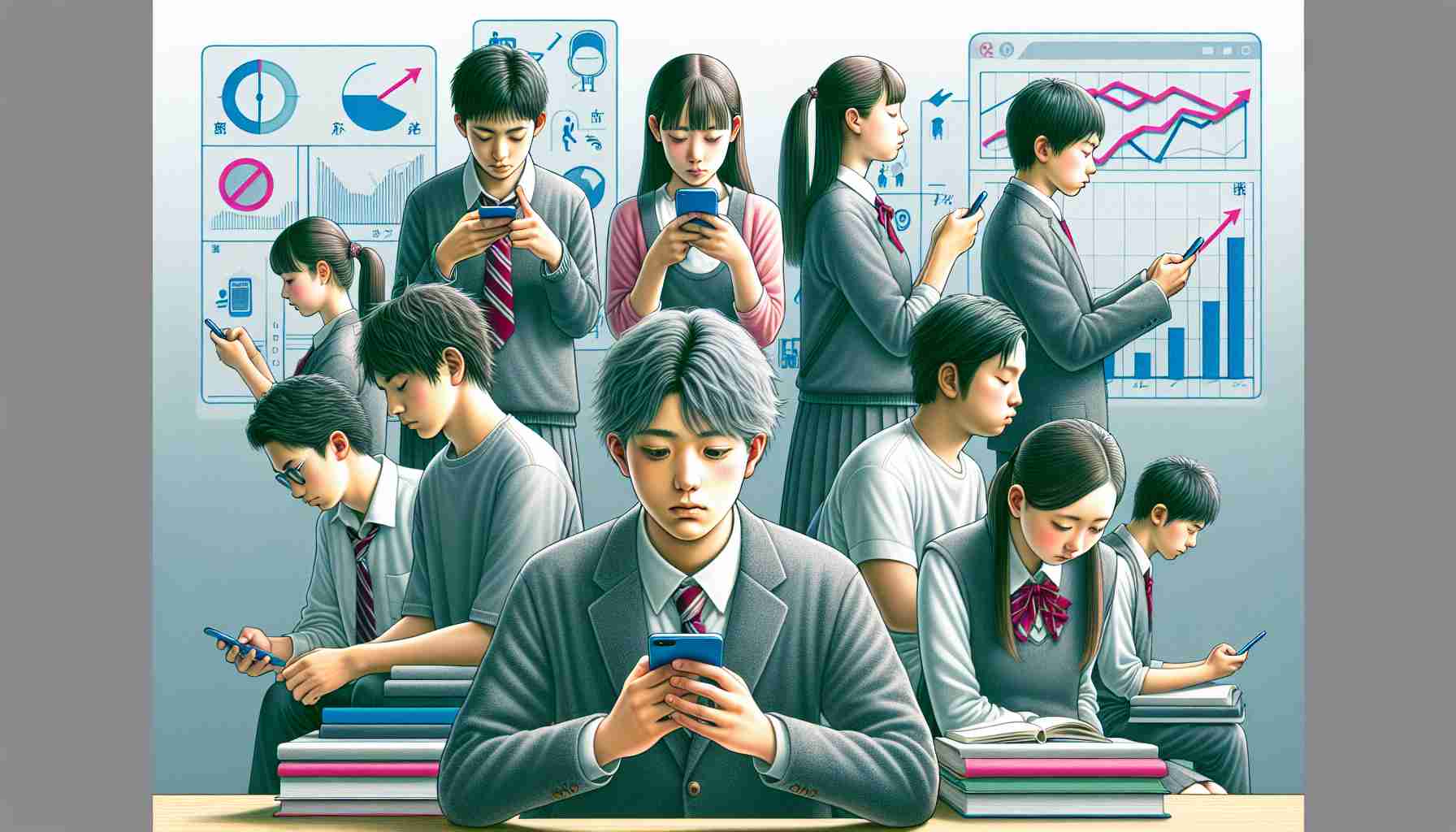Increased Smartphone Use Amongst the Young
Recent data from the Okayama Prefectural Board of Education reveals a growing trend of prolonged smartphone use amongst children. A survey conducted in 2023 found that students are spending more time with their devices, with elementary and middle school students clocking in over three hours of usage each day.
Survey Highlights Heightened Digital Engagement
An annual survey administered since 2014 in December, gathering insights from 7,091 students ranging from fourth-grade elementary to third-year high school across 82 public schools, highlights this uptick in digital consumption. Notably, ownership rates of smartphones have soared, reaching new peaks for younger students.
Varying Usage Patterns Across Age Groups
When excluding academic purposes, elementary students’ smartphone usage exceeding three hours per day has increased, as has the rate for middle schoolers. However, high school students showed a slight decrease. The primary uses for elementary students include gaming, music, and watching videos, while older students are more engaged in communication, calls, and social media activities.
Smartphone Use Across Circumstances
For the first time, the survey also explored the contexts in which smartphones are used. Free time after returning home is the most common period across all ages, with middle schoolers reporting a 100% usage rate. Significantly, the period right before sleep, often spent on their phones in bed, was the second-highest among middle and high schoolers.
Concerns Over Health and Regulations
Amid this increased use, health concerns such as sleep deprivation and diminished eyesight are prevalent, with a high number of students expressing anxiety. Additionally, despite the educational board setting targets for households to implement smartphone rules, actual rates of enforcement have decreased.
Efforts to Address the Impact of Smartphone Use
In response to these findings, the prefectural board aims to foster awareness about the implications of extended smartphone use on health. Initiatives include parent-specific workshops and instructional sessions delivered at schools to encourage effective device management. A spokesperson emphasized the necessity of smartphones in modern life and education, underscoring the goal to cultivate awareness towards effective and conscientious use.
Key Questions and Answers:
1. What are the health concerns related to increased smartphone usage among Japanese students?
Health concerns include sleep deprivation and eye strain, as students tend to use their smartphones excessively and often before sleep. Increased sedentary behavior can lead to obesity and related health issues.
2. Has there been any effort to regulate smartphone usage among students in Japan?
Yes, the educational board has set targets for households to implement smartphone rules, but the rate of enforcement has decreased. This lack of regulation can make it challenging to mitigate the negative impacts of smartphone use.
3. Are there any initiatives to educate students and parents about mindful smartphone usage?
Initiatives such as parent-specific workshops and instructional sessions at schools are being delivered to encourage effective device management and to raise awareness about the health implications of extended smartphone use.
Key Challenges and Controversies:
One of the main challenges is balancing the benefits of technology with the potential negative impacts on students’ health and well-being. While smartphones can be valuable educational resources, their overuse can lead to issues such as reduced physical activity, decreased attention span, and disrupted sleep patterns.
Controversy emerges around the question of who is responsible for managing children’s screen time—parents, schools, or the students themselves—and how regulations should be enforced without infringing on personal freedoms or hindering technological literacy and access.
Advantages and Disadvantages:
Advantages:
– Smartphones can be educational tools that facilitate learning and provide access to information.
– They help students stay connected with peers, family, and educational resources.
– Enhances skills in digital literacy which is essential for modern life.
Disadvantages:
– Overuse can lead to health problems such as eye strain, poor posture, and sleep disturbances.
– Can be a distraction and negatively affect academic performance and social interactions.
– Prolonged usage can exacerbate mental health issues like anxiety and depression.
For further reading on the topic and its broader context, you may visit World Health Organization for information on health-related concerns and Organisation for Economic Co-operation and Development (OECD) for education reports that often cover the impact of digital media on students.
